Common Dental Problems And How To Avoid Them
For a relatively small space, your mouth has a whole lot going on, health-wise. As the Mayo Clinic (charmingly) puts it, your kisser is "teeming" with bacteria — most harmless, but left alone, capable of causing real problems in your overall oral well being.
We all know that the American Dental Association recommends brushing your teeth, thoroughly, twice a day and many of us have been begged by our dental hygienists to actually floss. Cosmetic dentist and Huffington Post blogger, Dr. Thomas P. Connelly, adds that a morning tongue scraping is a "huge" part of overall oral health. What else can you do and what should you be on the lookout for? Check out our slideshow of 10 of the most common dental problems and (when possible) how to avoid them.
Bad Breath
Dr. Connelly says that the main source of bad breath (or halitosis) is the tongue. Why? Layers of bacteria can get embedded on it, resulting in foul-smellingVolitlie Sulfer Compounds.
The Mayo Clinic also lists possible bad-breath causes like dry mouth (which occurs naturally during sleep, but can also be caused by a glandular condition), as well as certain foods, like onions or garlic.
Connelly adds that another potential source — one that's often overlooked — is a post nasal drip, which causes bad breath because bacteria are attracted to the resulting mucus and phlegm.
Once again, he stresses the importance of a daily tongue scraping and suggests anti-histamines (after consulting your primary care provider, of course) if a post nasal drip is your problem.
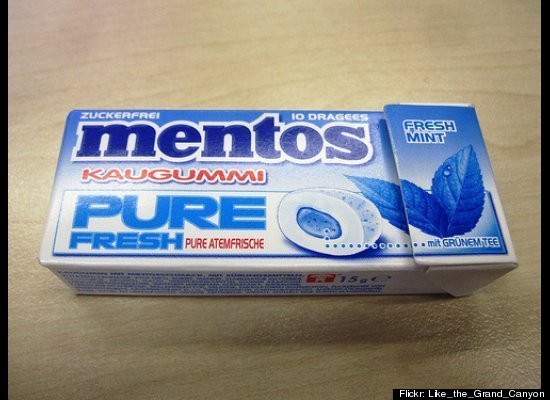
Gum Disease
Connelly says that gum disease is typically caused by three factors: bad oral hygiene, smoking and genetic susceptibility. According to the NIH, gum disease sufferers don't often show symptoms until their 30's and 40's, though teenagers can often have gingivitis, which is the milder form of the disease.
Periodontitis is the more severe form of gum disease and, according to the Mayo Clinic, can put you at greater risk for heart attack or stroke. How? Bacteria can be inhaled or enter your blood through the gums, eventually affecting your heart and lungs.
Symptoms of gum disease include things like constant bad breath, swollen or bleeding gums and loose or sensitive teeth. The NIH reports that treatment often includes a deep cleaning or scraping tartar from below the gum line, prescription antibiotics, mouthwashes or gels and surgery. Diligent at-home care is essential thereafter.
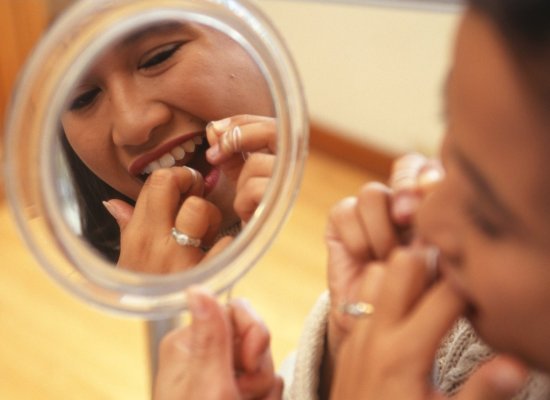
Mouth Sores
According to Connelly, there are generally two types of these: Canker sores and herpes. Canker sores are non-virus based and caused by everything from stress to a plain old hereditary predilection. Most people let them run their course, which typically takes around 12 days. But chronic sufferers, Connelly says, can have them treated with a laser, which is still a relatively new treatment, and takes about 15 minutes.
The second type of sore, herpes, is virus-based and contagious (through direct contact, like kissing, or sharing things like drinking glasses). According to the NIH, an outbreak typically involves skin lesions around the mouth and lips and small blisters and while there is no cure, Connelly says that oral herpes can be treated with anti-viral creams and pills.

Tooth Sensitivity

This one's a biggie and, Connelly says, there can be many causes. Chief among them are exposed root surfaces. He explains:
Other possible causes include exposure to heat or cold, sensitivity to acidity or cracked teeth. The bottom line? If your teeth are causing you real pain, you should go to your dentist to figure out what's going on.
Yellow Teeth
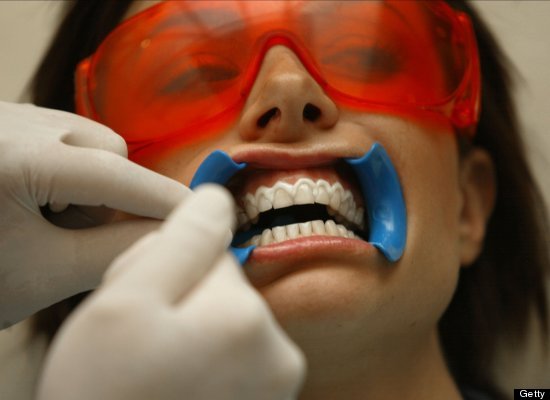
Cavities
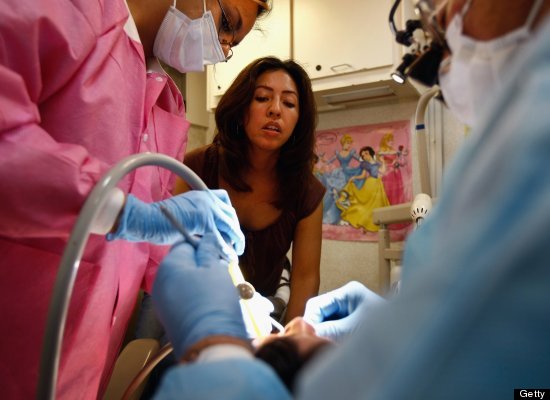
Another one caused by bacteria in the mouth being left alone and given time to cause damage. Said bacteria, Connelly explains, "feast on sugar and starch remnants left on and between our teeth. After they eat these carbohydrates, they secret an acid waste product. This acid dissolves the tooth enamel." The bacteria then move in and live in the spaces left behind in the teeth ("like a bunker!"), and are more difficult to reach through brushing and flossing.
The key to prevention? Good oral hygiene is your best bet and parents should be particularly mindful, as cavities most often occur in kids. Once a cavity has formed, a dentist can use a crown, filling or — if necessary — a root canal to treat the problem.
Wisdom Teeth
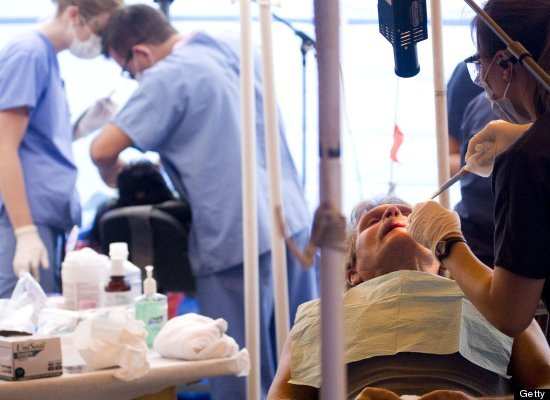
Ever wonder why some people have to get their wisdom teeth removed, while others don't? Connelly explains that if you have enough space in your jaw for them, they'll come in nicely and you can keep them forever. But for some people, there isn't enough room, which means they'll only come in, or "erupt" only partially. He explains that this is problematic because it can lead to infection:
Painful, impacted wisdom teeth are usually removed through surgery, though the Mayo Clinic says that some dentists will opt to remove impacted wisdom teeth that aren't necessarily causing pain, as a means of preventing infection.
Teeth Grinding

Teeth grinding or Bruxism, Connelly says, is very common in adults and is verydestructive to the teeth — causing them to become short and blunt, and sometimes resulting in jaw problems.
The most common causes? Misaligned teeth and stress. Connelly adds:
The NIH says people can also try things like physical therapy and daily relaxation techniques to both reduce stress overall and to train the muscles of the face and jaw to stay relaxed.
Tooth Erosion
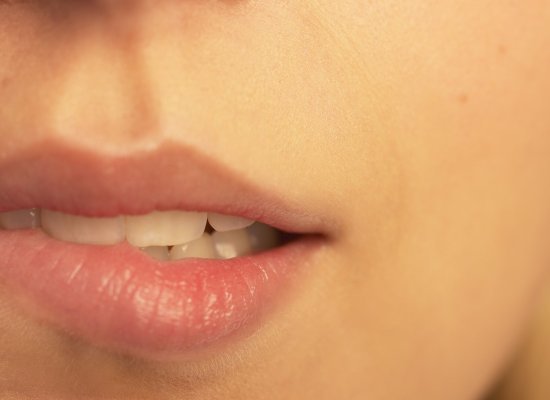
Toothaches

Toothaches are kind of the catch-all for oral health problems, and can be caused by just about everything in this slide show — cavities, impacted wisdom teeth, gum disease…
Connelly says his office sees about five emergencies every day related to toothaches. Some things — like a split tooth from an accident, for example — you may not be able to prevent, but in general, your best shot is practicing good oral hygiene and going to your dentist as soon as you suspect a problem to avoid letting it go too long.
Related articles
- Questions about dental fillings (FAQ) (tourismdentalindia.com)
- Ten Dental Commandments (tourismdentalindia.com)
- Kidney stones can lead to recurring infections in dogs (seattletimes.nwsource.com)
- Patient Education (tourismdentalindia.com)
- Myths about Dentistry (tourismdentalindia.com)
- Top Ten Cosmetic Dental Procedures (tourismdentalindia.com)
- Dental Innovations (tourismdentalindia.com)
- Bad Breath Faqs (tourismdentalindia.com)
- Dentistry Marketing (tourismdentalindia.com)
- Shanker Dental & Craniofacial Centre (tourismdentalindia.com)
- Dentist East Cobb – 4 Steps to Promoting Good Oral Health (therightsmile.wordpress.com)
- Dental Anomalies (tourismdentalindia.com)
- Is the Tooth Fairy Leaving Money Under Your Pillow? (viviankirkfield.wordpress.com)
- Tooth Pain (tourismdentalindia.com)





